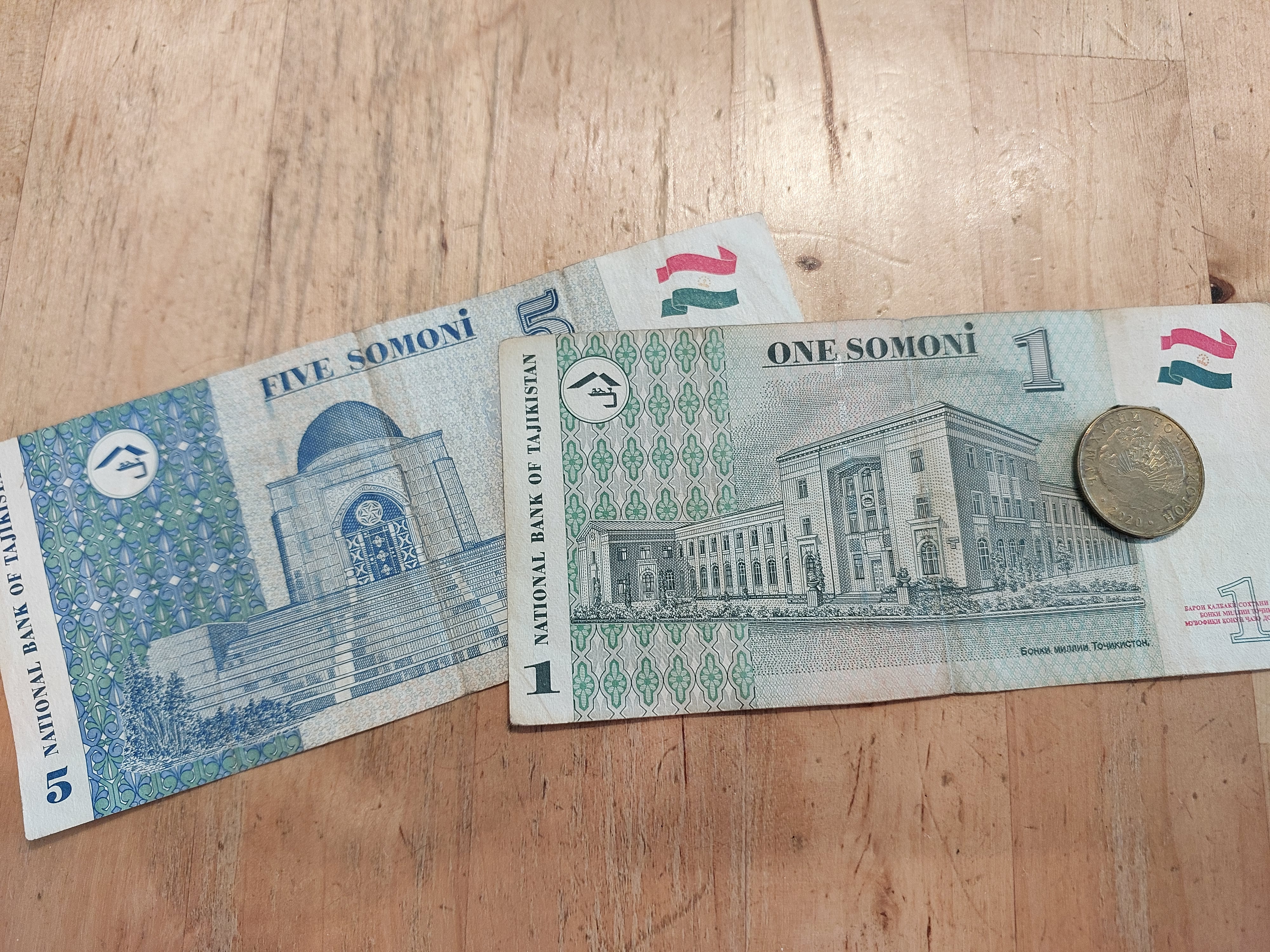The official currency of Tajikistan is the Tajikistani Somoni. In Tajik it’s written in Tajik Cyrillic as cомонӣ and officially is abbreviated as TJS. However, in Tajikistan it is likely to be written as SM, Som, S in Latin letter or in Cyrillic as сом or с.
The Somoni is named after Tajikistan’s national hero and founder of the Tajik nation, Ismoil Somoni.
The Somoni replaced the Tajikistani Ruble in 2000 at a rate of 1000 Rubles to 1 Somoni.
The Tajikistani Ruble itself replaced the Russian Ruble in 1995. Tajikistan was the last of the former Soviet republics to issue its own currency. Even the unrecognised breakaway state of Transnistria issued their own currency before Tajikistan did. After the breakup of the Soviet Union, Tajikistan lacked the funds and resources to issue their own currency, instead using the Soviet Ruble and then Russian Ruble until 1995.
The Somoni is divided into 100 Dirams, however due to the exchange rate, Dirams are rarely used.
Notes in circulation
The current notes in circulation in Tajikistan are 1, 3, 5, 10, 20, 50, 100, 200 and 500 Somoni notes. There are also 1, 5, 10, 20, 50 Dirams, although you’re unlikely to come across these as well as the 1, 3 and 5 Somoni notes, as the lower denominations also have coins in circulation of the same value and are therefore much less common.
The 200 and 500 Somoni notes can be quite annoying. Despite only being worth roughly USD18 and USD44 respectively, many shops will not have change or be able to break a note of this size.
Coins in circulation
The current coins in circulation are 5, 10, 20, 25 and 50 Dirams, although these are quite rare. There are also 1, 3 and 5 Somoni coins.
3 Somoni
Yes, you did read that correctly. Tajikistan uses a 3 Somoni note and coin. In the Soviet Union they issued 3 Ruble notes and a couple of the former Soviet countries, including Tajikistan and Kyrgzystan , followed suit and kept it when they adopted their own currencies.
Exchanging money
The most common and reliable way to get your hands on some Somoni is to go to an exchange shop. These are all over Tajikistan, as well as at Dushanbe airport and next to land border crossings. Smaller cities such as Khujand and Panjakent, and even much smaller towns, also have a large number of money changing options.
Most major currencies such as Euros, Pounds, Australian Dollars, Canadian Dollars, AED and RMB are able to be changed, however USD is always the best bet as it will always be accepted.
Most accommodation will also be more than happy to help you exchange money.
Exchange Rate of the currency of Tajikistan
The current official exchange rate (2022) is 10 Somoni to 1 USD. This rate is the official rate that is pegged to the USD. Every couple of years the official rate has been moved to reflect the black market rate at the time. This means that although there is a black market rate, currently at 12 Somoni to 1 USD, the difference between the official rate and black market rate is never huge.
Can you use foreign currencies in Tajikistan?
The short answer is no. Most restaurants, cafes, supermarkets or small shops will not want foreign currencies. When buying more expensive items such as carpets, many will be willing to accept USD or Euros, however most other currencies wouldn’t be acceptable. The same applies to hotels, who will also be willing to accept foreign currencies.
Are there ATMs in Tajikistan?
Yes, there are ATMs, however do not expect to rely on them. Very often the ATMs will not be working. A less common occurrence, but still likely, is that they do not have any money in them and the most common scenario is that your card does not work. The Hilton and Serena hotels in Dushanbe have ATMs and are the best bet to get your hands on money. Many towns won’t even have ATMs and it’s always best to bring most of your money in cash.


